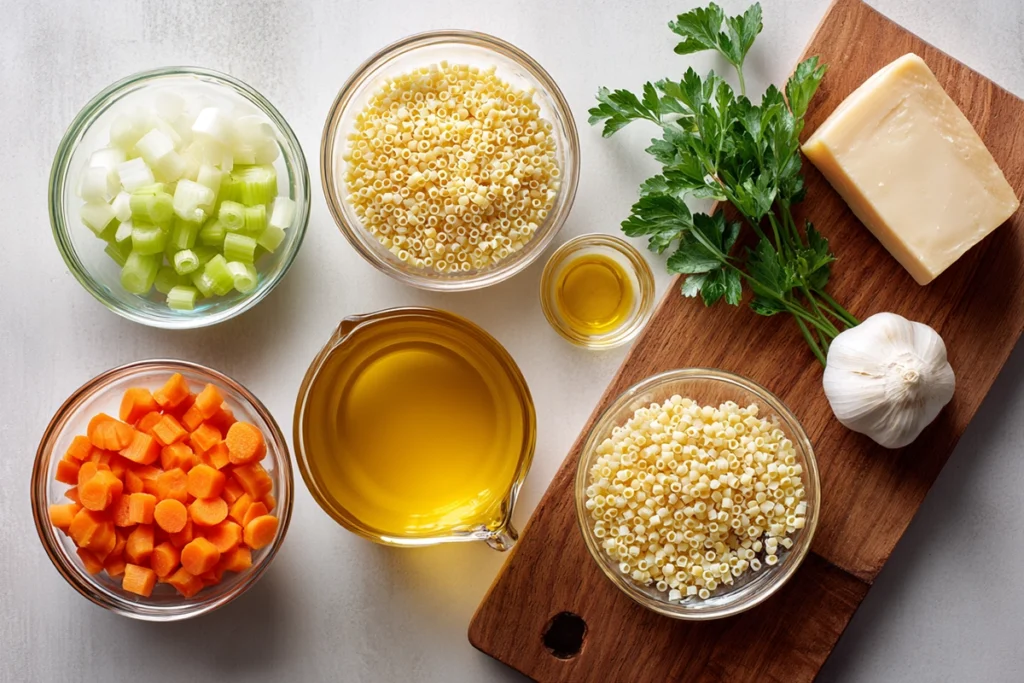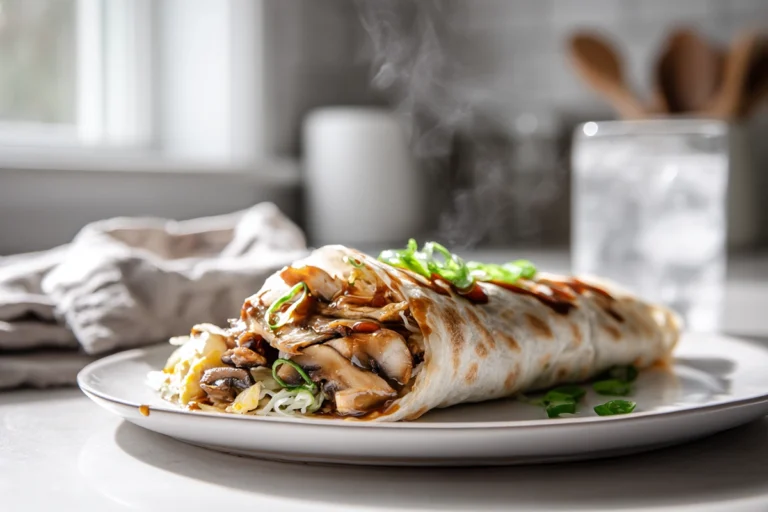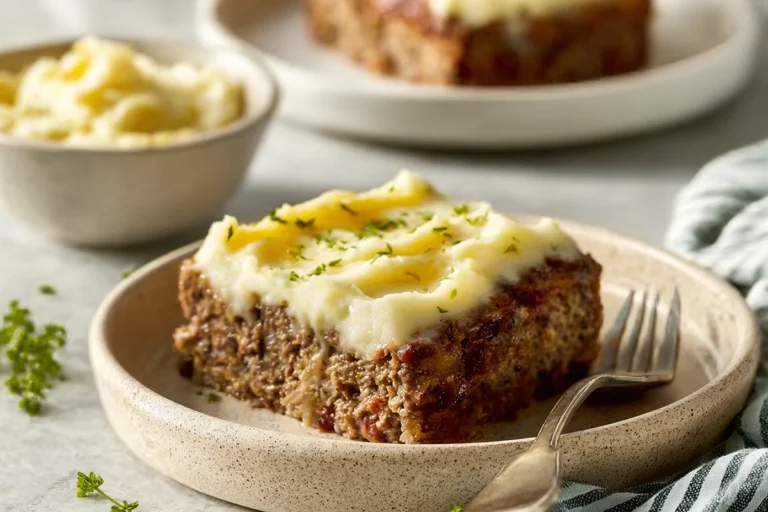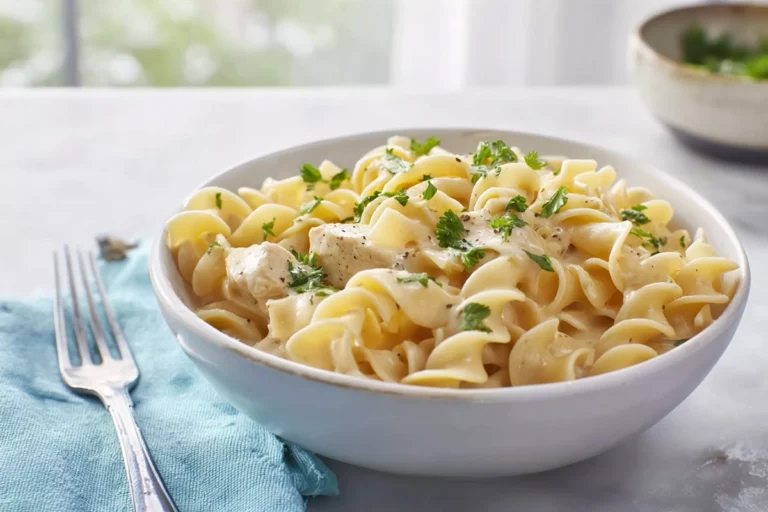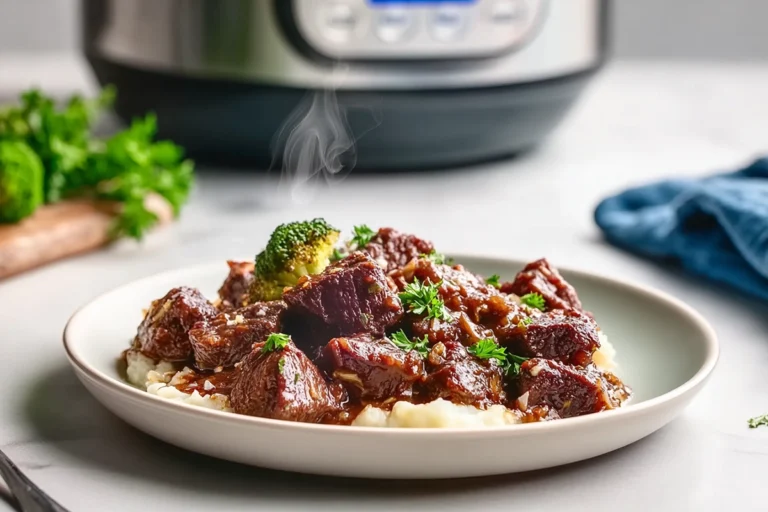Italian Pastina Soup: The Coziest Bowl of Comfort You’ll Ever Make
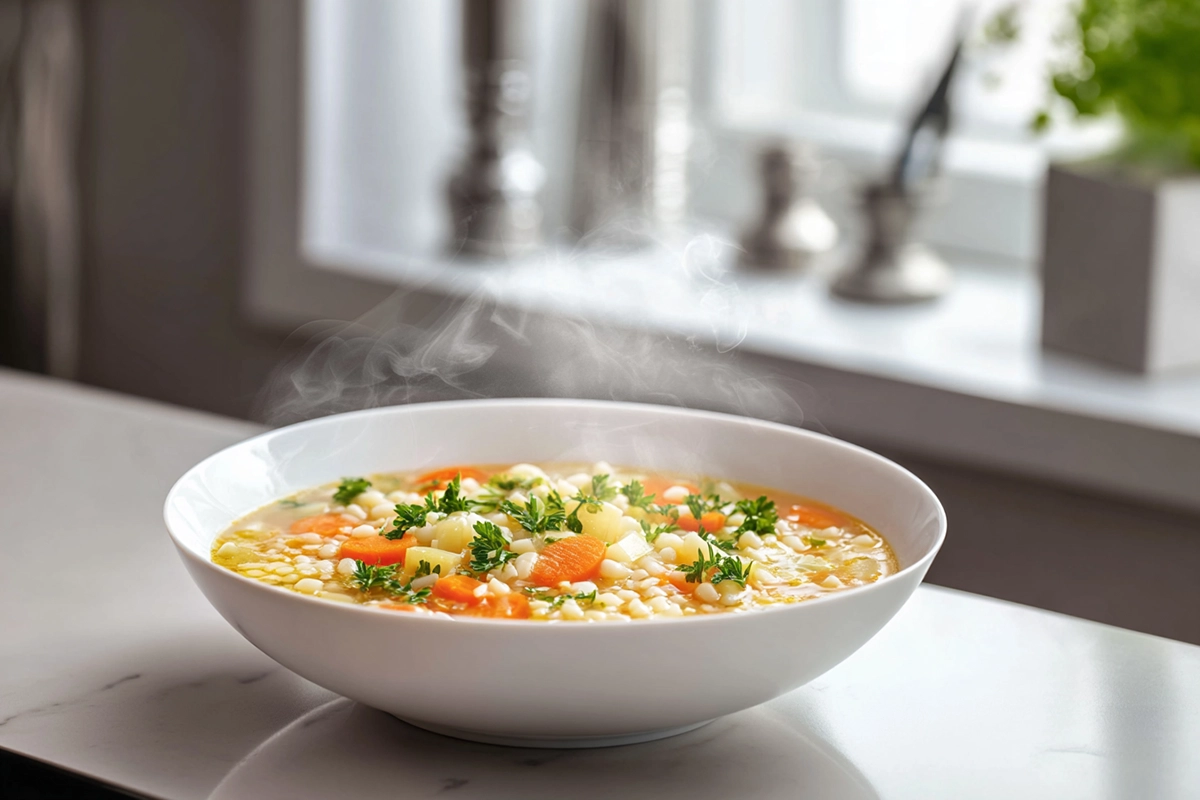
There are nights when all you crave is something simple, soothing, and warm enough to wrap you from the inside out. For me, that dish is always Italian Pastina Soup. I remember being sick as a kid and my grandmother pulling out a pot of broth, sprinkling in tiny star-shaped pasta, and somehow turning it into magic. It wasn’t fancy, but it felt like a hug in a bowl. That’s the beauty of this soup—it proves you don’t need complicated ingredients to create something deeply comforting.
Whether you’re chasing away a cold, feeding little ones, or just looking for a nostalgic taste of home, this recipe will quickly find its way into your rotation.
What Is Italian Pastina Soup?
At its heart, Italian Pastina Soup is a simple broth-based soup with tiny pasta—known as pastina, which literally means “little pasta” in Italian. While shapes vary (stars, tiny rings, or acini di pepe), the idea is the same: delicate pasta that turns ordinary broth into a hearty, satisfying meal.
In Italy, this soup has long been considered “Italian penicillin.” Families often serve it to children, the sick, or anyone in need of comfort. In the U.S., it’s loved for the same reason—it’s a quick way to turn a handful of pantry staples into something wholesome and deeply familiar. You might think of it as the Italian cousin to chicken noodle soup, but even lighter and more versatile.
Print
Italian Pastina Soup
- Total Time: 35 minutes
- Yield: 4 servings 1x
Description
A cozy and comforting Italian Pastina Soup made with tiny pasta, fresh vegetables, and a rich golden broth. Light, simple, and perfect for chilly nights or when you need a nostalgic taste of home.
Ingredients
6 cups chicken or vegetable broth
1 cup pastina (stelline, acini di pepe, or orzo)
1 small onion, finely diced
1 carrot, peeled and chopped
1 celery stalk, chopped
2 garlic cloves, minced
2 tablespoons olive oil or butter
1 Parmesan rind (optional)
Salt and black pepper, to taste
Fresh parsley, chopped, for garnish
Grated Parmesan cheese, for serving
Instructions
-
Heat olive oil or butter in a large pot over medium heat. Add onion, carrot, and celery; sauté until softened. Stir in garlic for 30 seconds.
-
Pour in broth and add the Parmesan rind if using. Simmer for 15–20 minutes.
-
Stir in pastina and cook until tender, 6–8 minutes. Stir occasionally to prevent clumping.
-
Remove Parmesan rind, adjust seasoning with salt and pepper.
-
Serve hot with fresh parsley and grated Parmesan on top.
Notes
For meal prep, cook pastina separately and add it when reheating to prevent a soggy texture.
You can swap chicken broth for vegetable broth to make it vegetarian.
Add shredded chicken or leafy greens for extra protein and nutrients.
Soup thickens when stored—add more broth or water when reheating.
- Prep Time: 15 minutes
- Cook Time: 20 minutes
- Category: Soup
- Method: Stovetop simmering
- Cuisine: Italian
Nutrition
- Serving Size: 1 bowl (approx. 1 ½ cups)
- Calories: ~220
- Sugar: 3 g
- Sodium: 720 mg (varies by broth)
- Fat: 8 g
- Saturated Fat: 2 g
- Unsaturated Fat: 5 g
- Trans Fat: 0 g
- Carbohydrates: 30 g
- Fiber: 3 g
- Protein: 7 g
- Cholesterol: 8 mg
Ingredients & Key Techniques
The magic of this soup lies in its simplicity. You’ll only need a few core ingredients to get started:
Ingredients
- 6 cups chicken or vegetable broth
- 1 cup pastina (stelline, acini di pepe, or orzo)
- 1 small onion, finely diced
- 1 carrot, peeled and chopped
- 1 celery stalk, chopped
- 2 garlic cloves, minced
- 2 tablespoons olive oil or butter
- 1 Parmesan rind (optional, but adds depth)
- Salt and black pepper, to taste
- Fresh parsley, chopped, for garnish
- Grated Parmesan cheese, for serving
Cooking Tips
- Build the base: Start by sautéing onion, carrot, celery, and garlic in olive oil until softened. This creates a flavorful foundation.
- Simmer the broth: Add the broth and Parmesan rind if using. Let it simmer so the flavors deepen.
- Cook the pasta separately if you plan to store leftovers. Tiny pasta can quickly absorb broth and become mushy when reheated.
- Add pastina at the end: If serving right away, stir the pastina into the simmering broth and cook until tender, about 6–8 minutes.
- Finish with freshness: A sprinkle of parsley and a dusting of Parmesan brighten the bowl just before serving.
Step-by-Step Recipe Instructions
Prepare the Vegetables
Heat olive oil in a large pot over medium heat. Add onion, carrot, and celery, cooking until soft and fragrant. Stir in garlic for another minute, making sure it doesn’t burn.
Build the Broth
Pour in the chicken or vegetable broth and add the Parmesan rind if you have one on hand. Season lightly with salt and pepper. Simmer for 15–20 minutes to allow the flavors to blend.
Add the Pastina
Stir in the pastina and cook until tender. Remember, this pasta is tiny and cooks fast—don’t walk away from the pot. If you prefer a clearer broth, cook the pasta separately in salted water and combine just before serving.
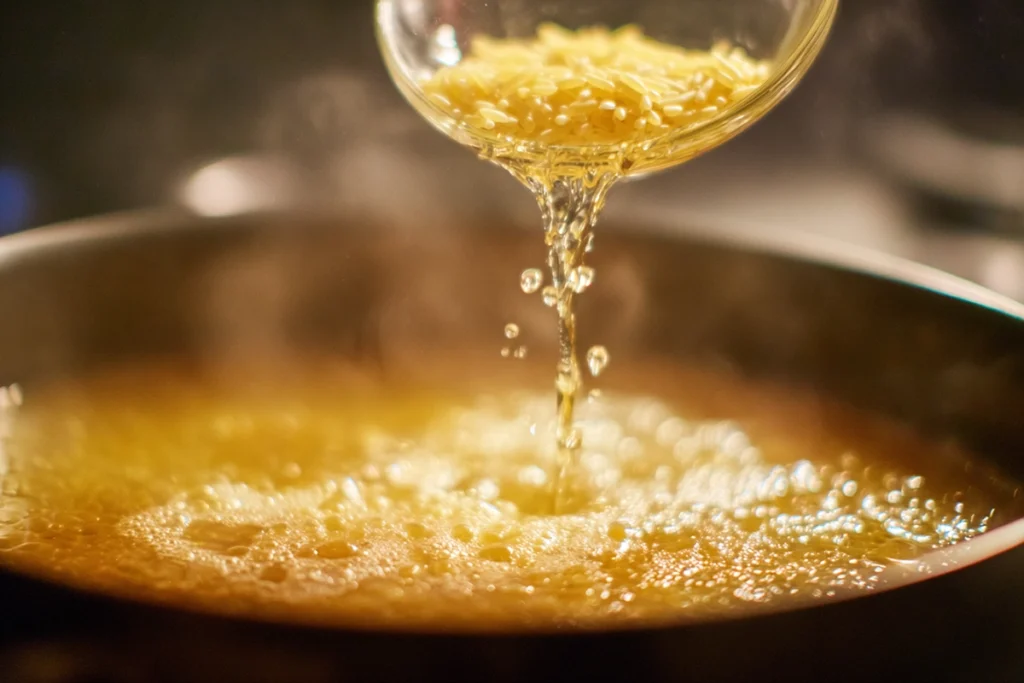
Serve
Remove the Parmesan rind. Ladle the soup into bowls, garnish with fresh parsley, and sprinkle with grated Parmesan. Serve hot with crusty bread for dipping.
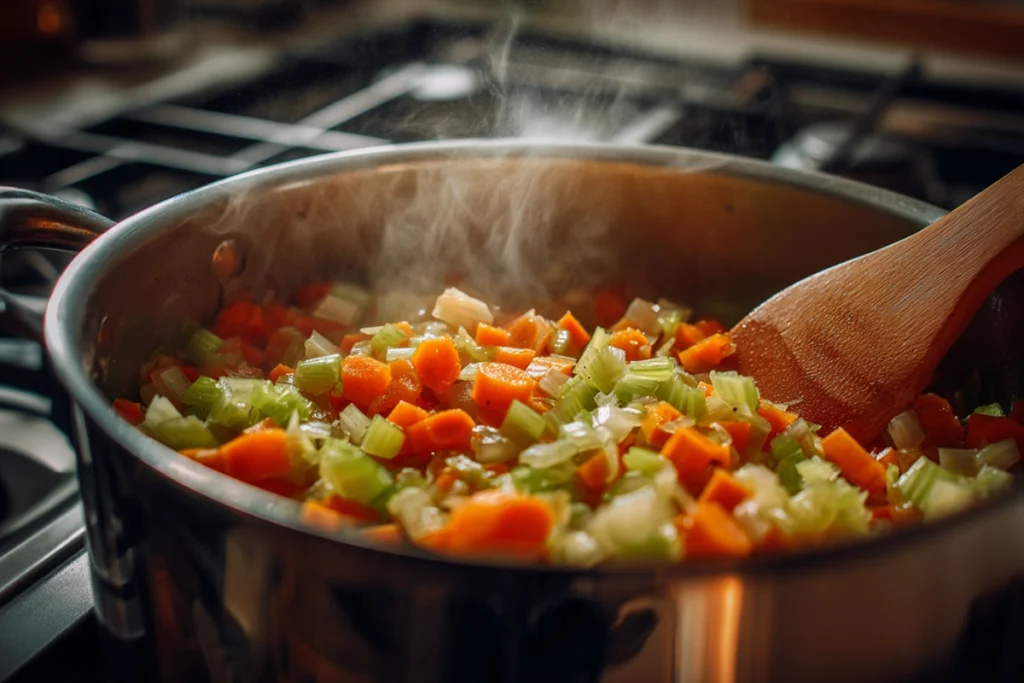
Dietary Variations & Substitutions
One of the reasons Italian Pastina Soup works so well is its adaptability. You can tailor it to nearly any diet without losing that cozy appeal.
Vegan or Vegetarian
Use vegetable broth instead of chicken, and skip the Parmesan rind. For richness, stir in a splash of olive oil at the end. Nutritional yeast can stand in for cheese.
Gluten-Free
Swap traditional pastina for gluten-free options like corn, rice, or lentil-based mini pasta. They hold up well in broth and taste just as comforting.
Low-Calorie
Cut the pasta amount in half and bulk up the soup with extra vegetables such as zucchini, spinach, or kale. This keeps it filling but lighter on calories.
Dairy-Free
Leave out Parmesan or use a dairy-free alternative. A squeeze of lemon juice at the end adds brightness in place of cheese.
Halal or Kosher
Choose broth that meets dietary standards, and keep seasonings simple. The soup’s flavor shines even with basic substitutions.
Variations & Creative Twists
Once you’ve mastered the classic version, you can make it your own.
Add Protein
Shredded rotisserie chicken, turkey, or even a soft-cooked egg stirred into the broth can transform it into a heartier meal.
Boost the Veggies
Spinach, kale, or even zucchini ribbons make great add-ins that balance the starch of the pasta.
Spice It Up
If you like a little heat, sprinkle in red pepper flakes or drizzle chili oil over the top.
Brighten the Flavor
A squeeze of lemon juice or a handful of fresh basil can lift the flavor and add freshness.
Storage, Make-Ahead & Reheating Tips
If you’re planning to make this soup ahead of time, here’s the golden rule: keep the pastina separate. Store the broth and vegetables in one container and the cooked pasta in another. Combine only when reheating to avoid a soggy texture.
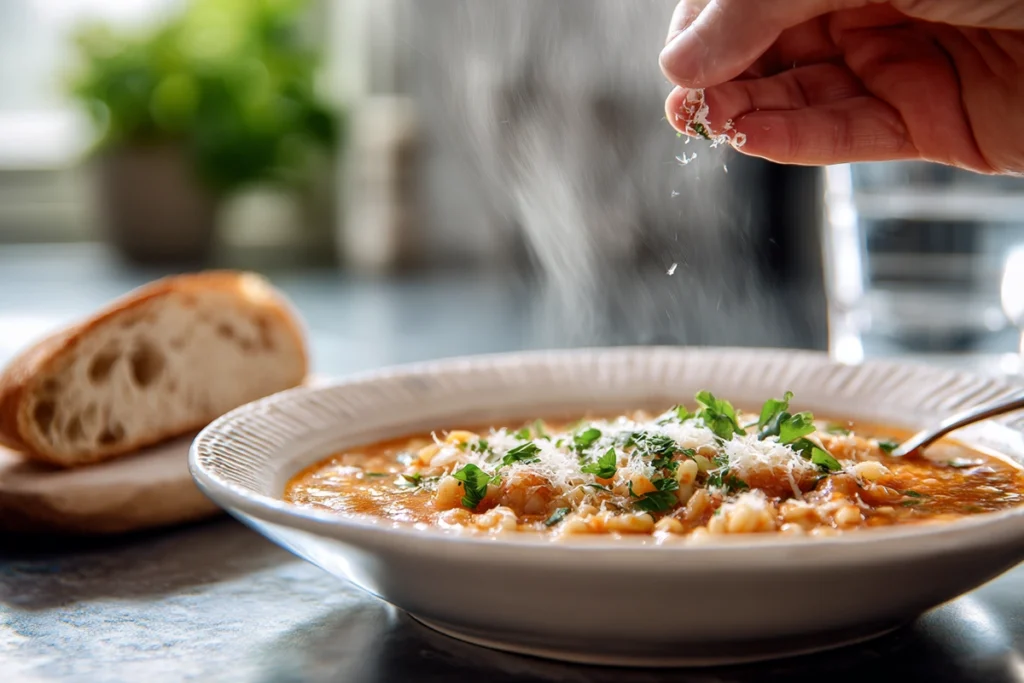
- Refrigerator: The broth will keep for 3–4 days in an airtight container.
- Freezer: The broth (without pasta) freezes beautifully for up to 3 months. Thaw overnight in the fridge before reheating.
- Reheating: Warm broth on the stovetop, then add fresh or pre-cooked pastina. If the soup thickens too much, add a splash of water or broth to loosen it.
FAQ
What kind of pasta is pastina?
Pastina is “tiny pasta” in Italian—very small pieces often used in soups. It can come in shapes like stars (stelline), acini di pepe, or little rings. Because of its minuscule size, it blends beautifully into broths without overwhelming them.
Is pastina soup healthy?
Yes—when made with a good-quality broth and fresh vegetables, Italian Pastina Soup offers a satisfying balance of light carbs, hydration, and nutrients. You can make it even healthier by adding more veggies or using a lower-sodium broth.
Can I make pastina soup ahead of time?
Definitely. Just keep the pasta separate from the broth and veggies. Store them individually and combine them when you’re ready to reheat so your pasta stays firm, not mushy.
How do I reheat without losing texture?
Warm the broth first, then stir in fresh or pre-cooked pastina. If the mixture thickens too much, add a splash of water or extra broth. This method preserves the soup’s body without turning it into paste.
Can I freeze pastina soup?
You can freeze the broth and vegetables, but not the cooked pasta (it gets mushy). In other words, freeze only the liquid portion, then add freshly cooked pasta when you reheat.
What Are Our Readers Saying?
There are no reviews yet. Be the first one to write one.

